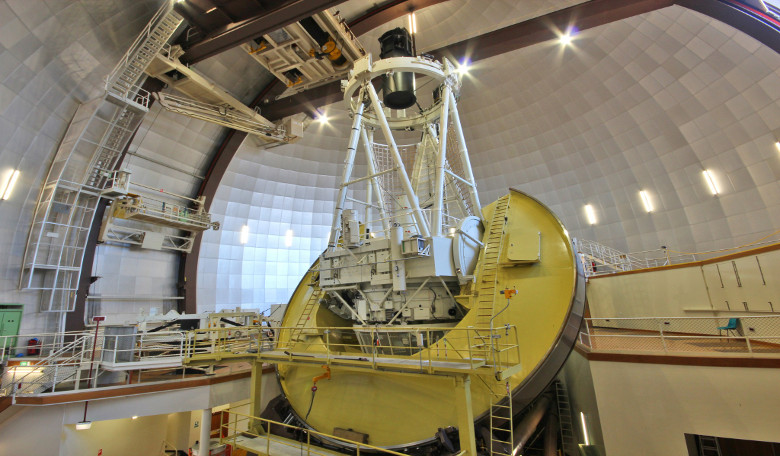An ambitious Galactic Archaeology survey, called GALAH, whose quest is to uncover the evolution of galaxies, has just revealed the ‘fingerprints’ of more than 340,000 stars in the Milky Way, which should, amongst other things help identify where the stars that 'grew-up' with the Sun are now hiding.
Our Sun, once upon a time, would have been born from a huge cloud of gas and dust that collapsed to form a protostar – and it wouldn’t have been alone. Most stars are born in clusters with hundreds, if not thousands of other stars, so somewhere out there is the Sun’s ‘lost siblings.’
Stars from the same cluster should inherit the same characteristics of the cloud it collapsed from, so the same chemical elements in roughly similar amounts. Identifying stars born together should then be a matter of matching up stars with the same spectra. Spectra is the light emitted from a star and within it, the chemical elements that make up the star can be determined as each one leaves a unique pattern of dark bands at specific wavelengths.
Collecting light from each star is very time consuming – it takes about an hour to collect enough photons of light for each star in order to scrutinise its spectra. Luckily the Anglo-Australian Telescope (AAT) at the Australian Astronomical Observatory (AAO) near Coonabarabran, NSW, is equipped to observe 360 stars at the same time using fibre optics and an Australian-led group of astronomers working with European collaborators have taken advantage of this to produce an unprecedented set of spectral data using the HERMES spectrograph on the AAT.
"No other survey has been able to measure as many elements for as many stars as GALAH," said Dr Gayandhi De Silva, of the University of Sydney and AAO, the HERMES instrument scientist who oversaw the working groups on this project.
It has taken the team over 280 nights since 2014 to collect the light from 340,000 stars, but the result will enable scientists to not only narrow down cousins of our Sun but to help trace the ancestry of many stars, and therefore show how the Universe just after the big bang, went from having just the lightest elements hydrogen and helium, to being filled with all the elements we see today, including those necessary for life on Earth.
"This data will enable such discoveries as the original star clusters of the Galaxy, including the Sun's birth cluster and solar siblings - there is no other dataset like this ever collected anywhere else in the world," Dr De Silva said.
Now that the data has been collected, the task of analysing it begins and that in itself is another mammoth undertaking. Fortunately, it is has not been left to an unlucky individual to sift through the data star by star. Instead the team have a helping hand in the form of The Cannon – a computer code that recognise patterns in the spectra of a subset of stars and then it uses machine learning algorithms to determine the amount of each element for all of the 340,000 stars.
"The Cannon is named for Annie Jump Cannon, a pioneering American astronomer who classified the spectra of around 340,000 stars by eye over several decades a century ago - our code analyses that many stars in far greater detail in less than a day,” said PhD student Ly Duong, who along with fellow PhD student Sven Buder and Professor Martin Asplund of ANU and ASTRO 3D lead the way in the analysis effort of the project.
The GALAH survey's data release precedes an up and coming data release from Gaia – a satellite that has mapped more than 1.6 billion stars in the Milky Way. Together the two will be able to show not just the positions and distances of the stars, but also their motions within the Galaxy.











